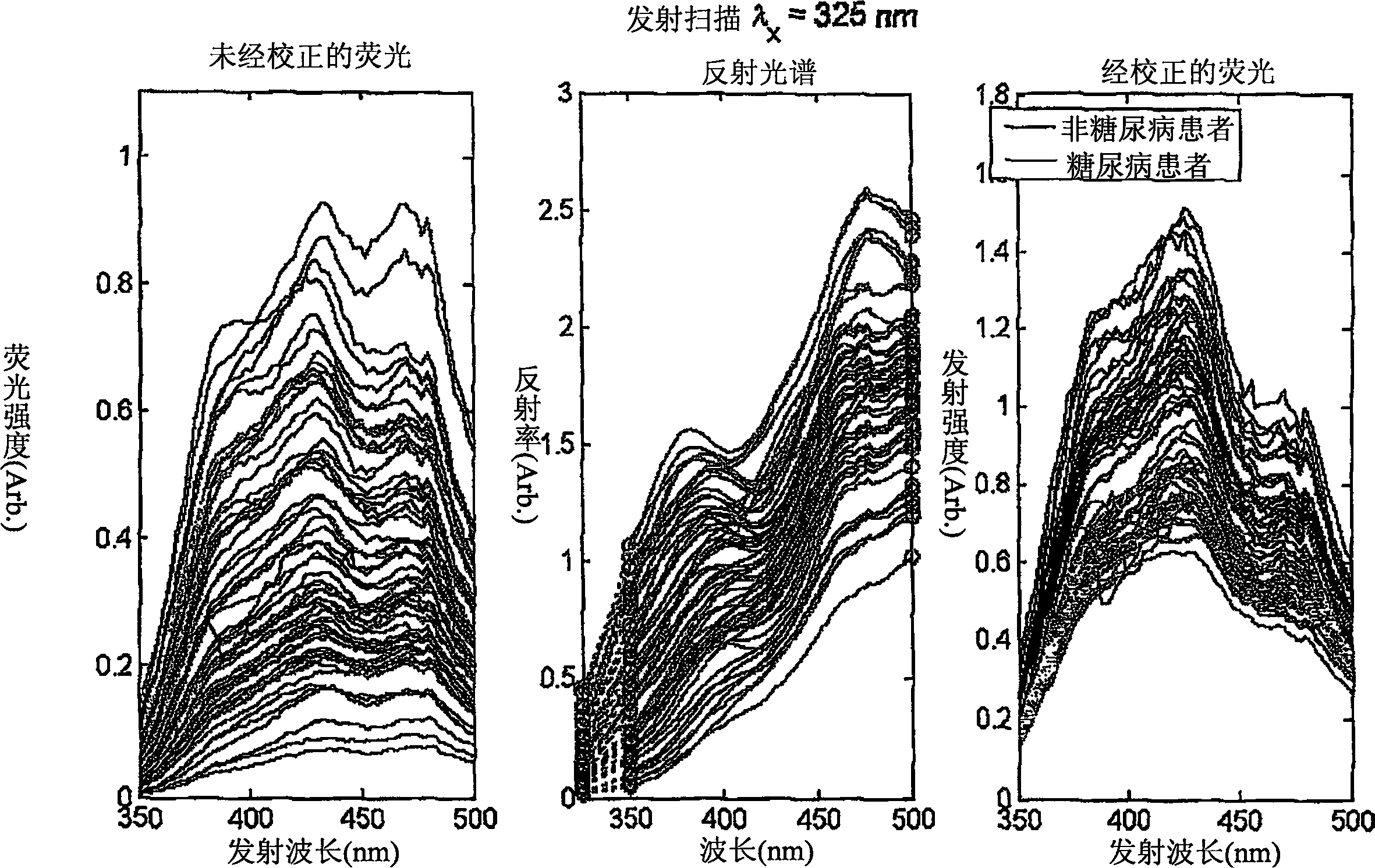Determination of a measure of a glycation end-product or disease state using tissue fluorescence
A tissue, state technology, applied in the field of using tissue fluorescence to determine a certain glycation end product or disease state, which can solve problems such as technologies or methods that do not mention variable properties
- Summary
- Abstract
- Description
- Claims
- Application Information
AI Technical Summary
Problems solved by technology
Method used
Image
Examples
Embodiment Construction
[0043] Exposure of proteins to glucose generally results in non-enzymatic glycation and sugar oxidation, a process known as the Maillard reaction. The stable end products of the Maillard reaction are collectively referred to as advanced glycation end products (AGEs). In the absence of significant clearance, the AGEs accumulate at a rate proportional to mean blood glucose levels. The Maillard reaction can be thought of as an aging process that occurs regularly in the healthy state and is accelerated in diabetic patients by the presence of chronic hyperglycemia. In the skin, collagen is the most abundant protein and is susceptible to glycation. Skin collagen AGEs are usually in the form of fluorescent cross-links and adducts; pentosidine (cross-link) and carboxymethyllysine (CML, adduct) are two well-studied skin- Collagen AGE example. Other AGE examples include fluorolink, pyrraline, crossline, N'..-(2-carboxyethyl)lysine (CEL), glyoxal-lysine dimer (GOLD), methylethyl Dial...
PUM
 Login to View More
Login to View More Abstract
Description
Claims
Application Information
 Login to View More
Login to View More - R&D
- Intellectual Property
- Life Sciences
- Materials
- Tech Scout
- Unparalleled Data Quality
- Higher Quality Content
- 60% Fewer Hallucinations
Browse by: Latest US Patents, China's latest patents, Technical Efficacy Thesaurus, Application Domain, Technology Topic, Popular Technical Reports.
© 2025 PatSnap. All rights reserved.Legal|Privacy policy|Modern Slavery Act Transparency Statement|Sitemap|About US| Contact US: help@patsnap.com



